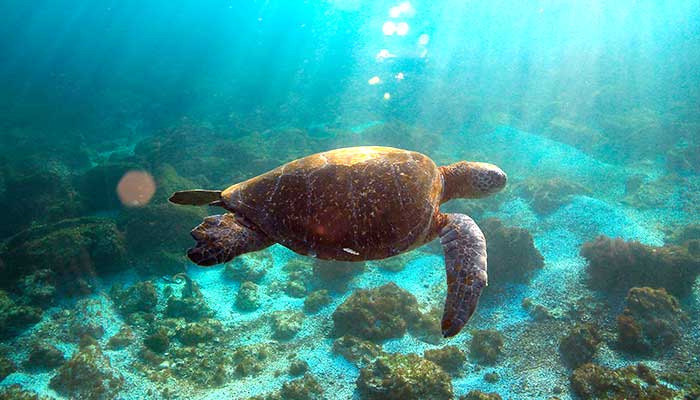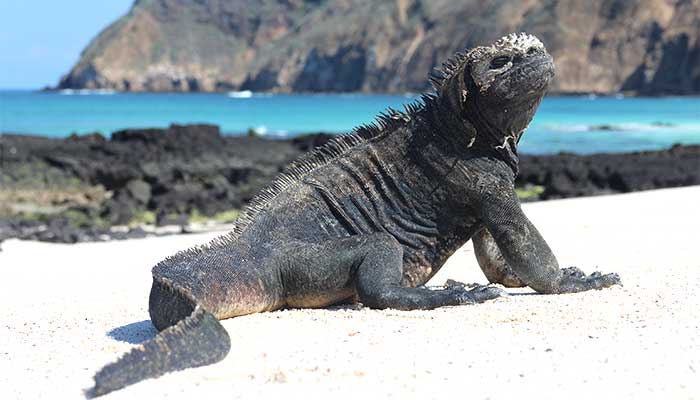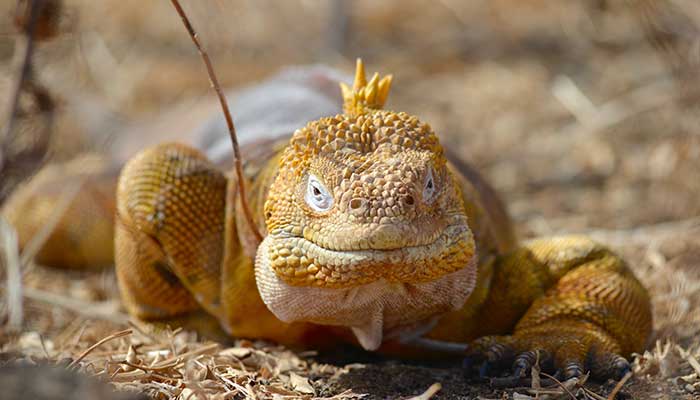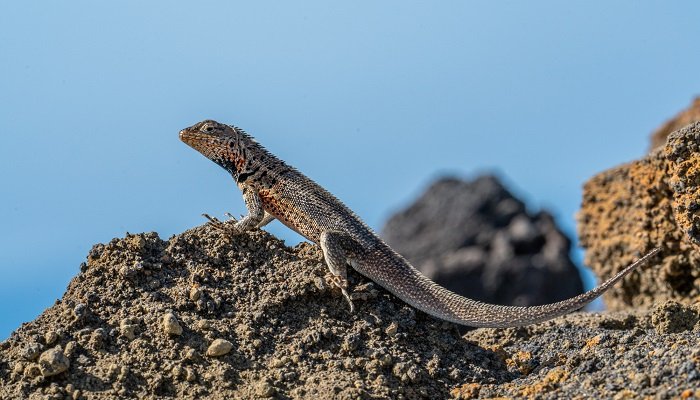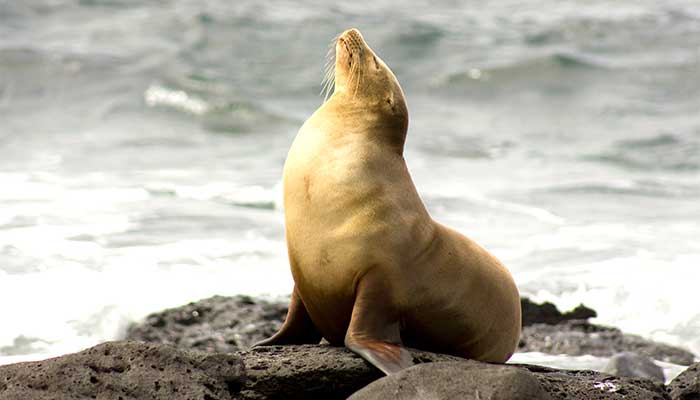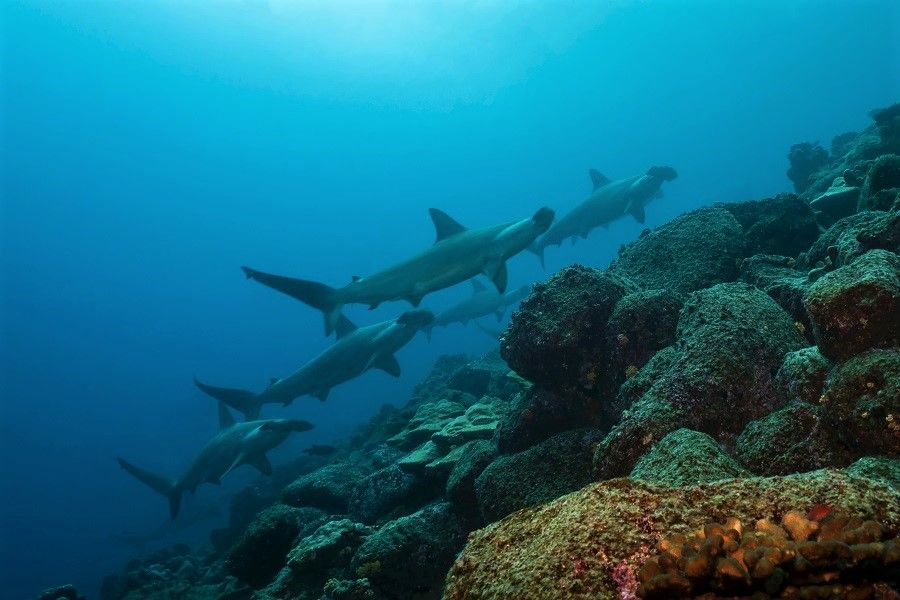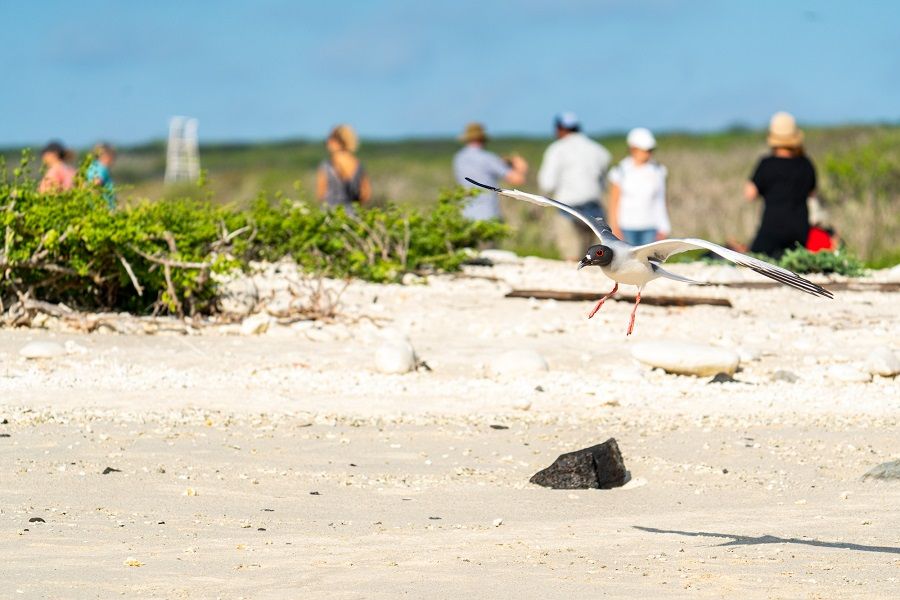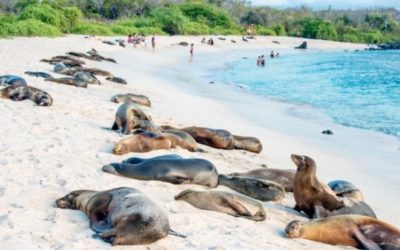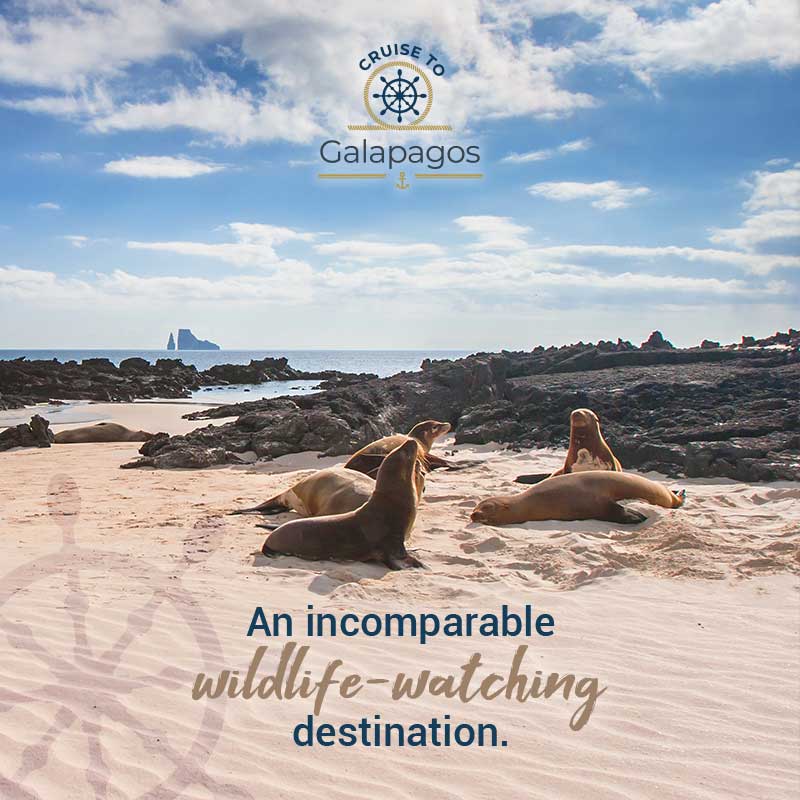Top endemic species on the Galapagos Islands
Top endemic species on the Galapagos Islands
Stay up to date with our most recent news and updates
The Galapagos Islands are an amazing place when landscapes mix perfectly with the incredible endemic species. One plus that the Islands have is that is only 3% inhabited by humans, resulting in a place where nature remains untouched or unaltered by the human hand.
Many of the species had been living in the same place for centuries, inspiring visitors like Charles Darwin with his theory of evolution, because many are the result of the evolution and the best adaptability to their ambient. Most of the Galapagos endemic species are non-afraid to humans and can be watched at a few meters away (2 meters / 7 feets).
Bellow, in this list, you will find the most relevant and novel species of the Galapagos Islands, according to most traveler’s opinions.
GIANT TORTOISES
The largest species of tortoises that are still alive.
Places where can be observed: The largest populations are located on Santa Cruz and Isabela islands, but also can be seen on Española, Pinzon, Santiago, or San Cristobal.
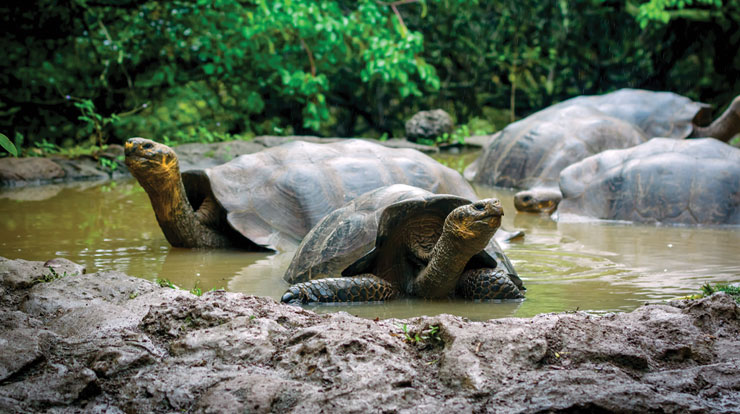
Most recommended season to see them: In the hot season early morning or late afternoon and during the cool season are most active at midday Can be seen all year round.
MARINE TURTLES
Galapagos green turtle.
Places where can be observed: Can be seen in the coastal waters all around the Galapagos Islands.
Most recommended season to see them: All year-round.
MARINE IGUANAS
The only lizard with the ability to live at sea.
Places where can be observed: Mostly on the coastal region of Española, Fernandina, Floreana, Isabela, Santa Cruz, and islets around.
Most recommended season to see them: All year round, spend most time basking in the sun.
LAND IGUANAS
There are three species of endemic land iguanas in the Galapagos Islands
Places where can be observed: Baltra, Fernandina, Isabela, North Seymour, Santa Cruz, and South Plaza Islands.
Most recommended season to see them: Can be seen all year round.
LAVA LIZARDS
It is commonly found in large groups in volcanic lava, basking in the sun.
Places where can be observed: Can be found in all the islands with the exception of Darwin, Genovesa, and Wolf.
Most recommended season to see them: All year-round.
FUR SEALS
Its fur is much thicker than that of sea lions.
Places where can be observed: Can be found in all the islands but are more likely to be found on Darwin Bay, Genovesa, James Bay, or Santiago.
Most recommended season to see them: Can be seen all year round, but pups can be seen in October.
SEA LIONS
Often seen sleeping on the beaches.
Places where can be observed: In all the islands, along the coastline.
Most recommended season to see them: All year-round.
FLIGHTLESS CORMORANTS
The heaviest cormorant species.
Places where can be observed: On the East coast of Fernandina and western Isabela.

Most recommended season to see them: Can be seen all year round, but nesting between May and October.
FINCHES
Also known as Darwin’s finches, are more than 13 different species.
Places where can be observed: There are 13 species of different finches and can be seen on almost all the islands.
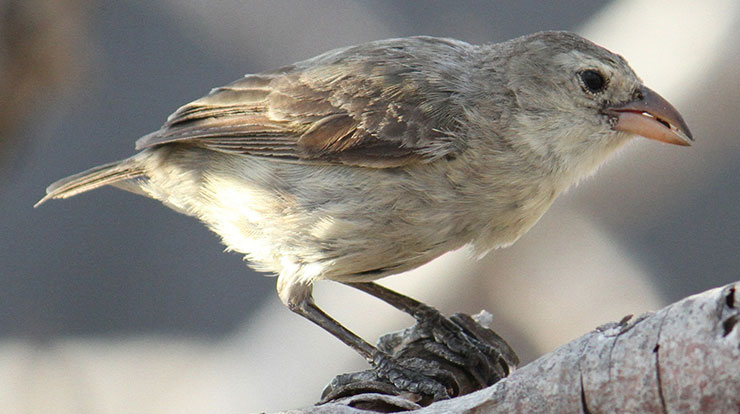
Most recommended season to see them: All year-round.
PENGUINS
The most northerly and one of the smallest penguins in the world.
Places where can be observed: Often found on Fernandina or Isabela, but can also be observed on Bartolome, Floreana, or Santiago.
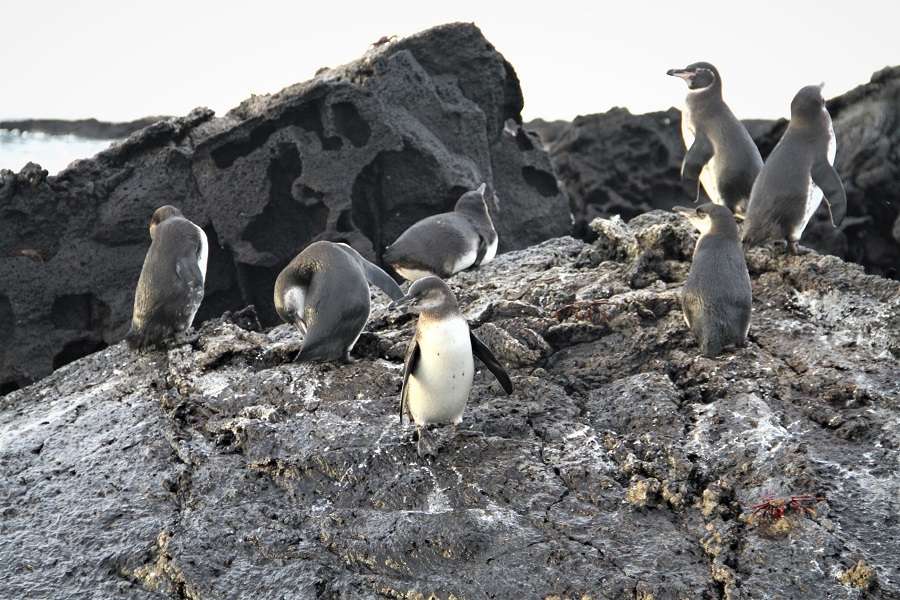
Most recommended season to see them: Can be seen all year round.
FRIGATE BIRDS
One of the largest wingspan to body weight ratio of the world.
Places where can be observed: On their colonies located on Floreana, Genovesa, North Seymour, or San Cristobal.
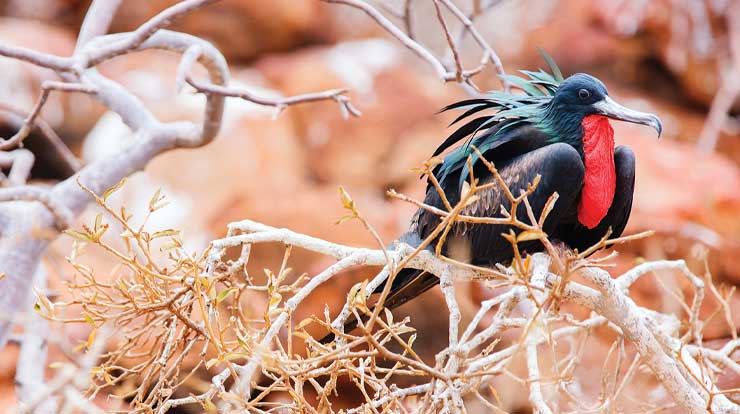
Most recommended season to see them: All year-round.
BLUE-FOOTED BOOBIES
Easy to identify do their brightly colored feet.
Places where can be observed: The main breeding site is located on North Seymour, but also can be seen on Española, Fernandina, Floreana, Isabela, Pinzon, and Santa Cruz.
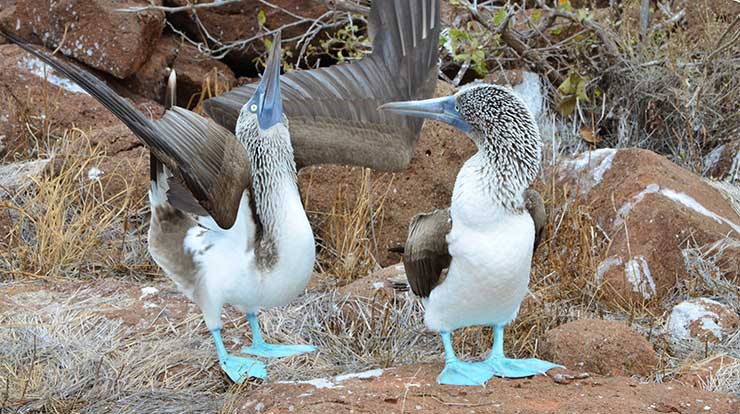
Most recommended season to see them: The best time is during their breeding season that occurs between June and August.
HAMMERHEAD SHARKS
In March 2019, a new Hammerhead shark refuge was found in Galapagos.
Places where can be observed: On the northern islands of Darwin and Wolf.
Most recommended season to see them: All year-round, but the highest number of sights are in January.
SWALLOW-TAILED GULLS
Are intelligent birds that have complex communication methods.
Places where can be observed: They are typically coastal species, and fly great distances, can be observed on Barranco, Daphne Mayor, Darwin Bay, South Plazas of Suarez Point.
Most recommended season to see them: Can be seen all year round.
GALAPAGOS HAWKS
Estimated population of 150 breeding pairs.
Places where can be observed: On the islands of Fernandina and Isabela.
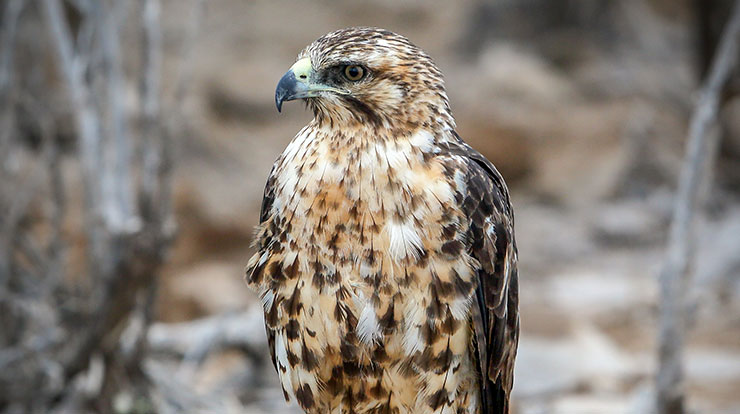
Most recommended season to see them: All year-round.
CRUISE TO GALAPAGOS and its four cruises Alya Luxury Catamaran, EcoGalaxy First-class Catamaran, Galaxy First-class Yacht, and Bonita Yacht offer different itineraries and routes. Providing all passengers the opportunity to know all these iconic endemic species of the “Enchanted Islands”.
If you are looking for an amazing cruise experience, when knowing the species listed on this post, click here.
If you liked this post, you can share it with your friends, or if you want to know more information, you can subscribe to our newsletter and receive updates on Galapagos, Ecuador, and other magical destinations in South America.
RELATED POST
What to pack for a Galapagos Islands Trip?
Don’t forget anything! Find out what clothes, shoes, electronic devices and extras, you should pack for your next Galapagos Islands vacation.
Galapagos Islands Month by Month
Find out what happens in the Galapagos Islands month by month. Here’s full details of weather, wildlife, and what to expect.

